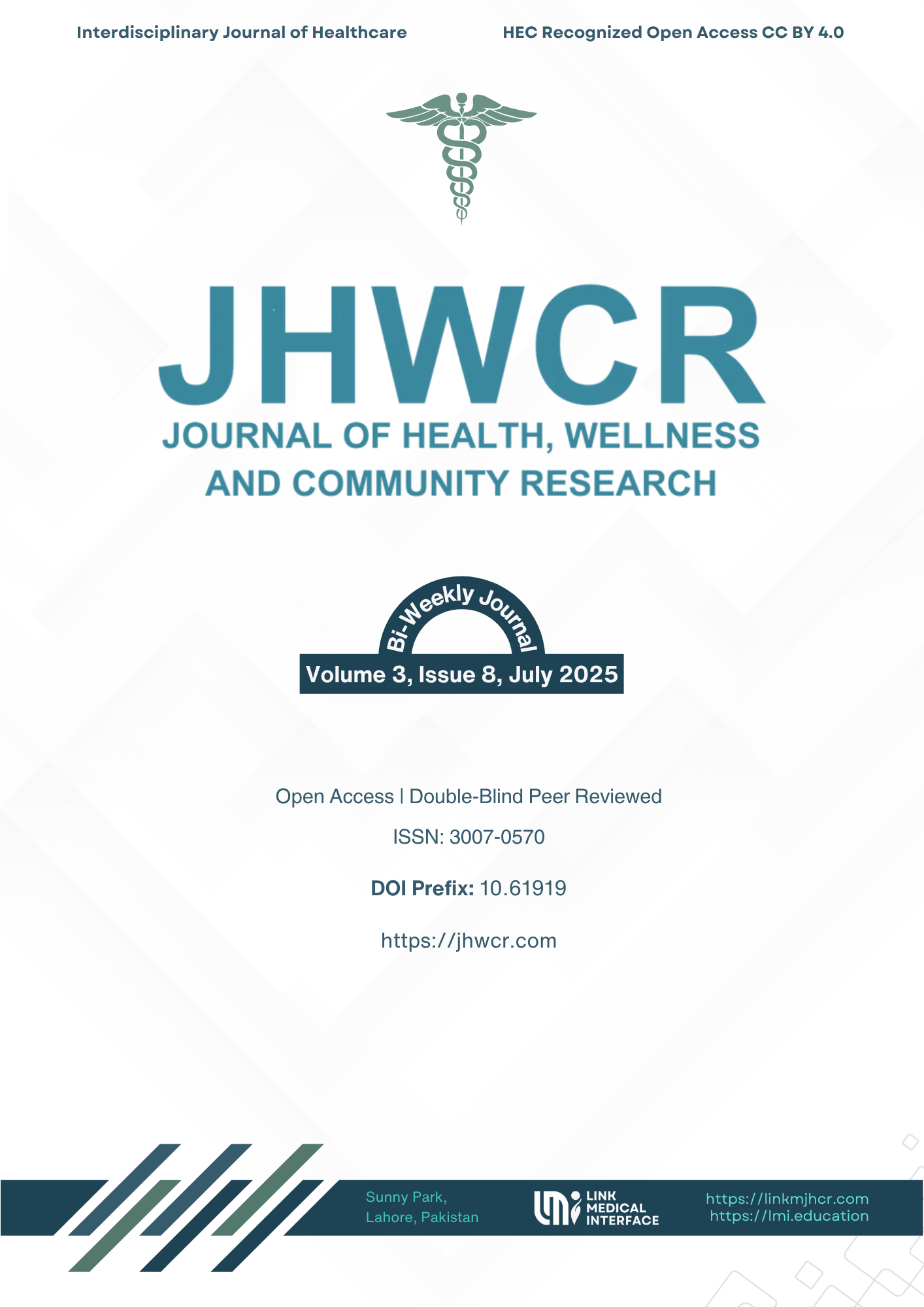Comparison of Skin Graft Take with and Without Post Grafting Topical Negative Pressure Dressing
DOI:
https://doi.org/10.61919/h42jh635Keywords:
Negative Pressure Wound Therapy, Skin Graft, Wound Healing, Lower Limb, Randomized Controlled TrialAbstract
Background: Skin grafting is a critical surgical technique for lower limb wound coverage, yet graft failure remains a significant challenge due to factors such as seroma, haematoma, shear forces, and infection. Negative pressure wound therapy (NPWT) has emerged as a promising adjunct to improve graft survival by promoting graft adherence, reducing fluid accumulation, and optimizing wound microenvironments. However, robust local evidence supporting NPWT in this context is limited. Objective: To compare the percentage of skin graft take and associated clinical outcomes between patients treated with NPWT and those receiving conventional postoperative dressings following split-thickness skin grafting for lower limb wounds. Methods: A single-center randomized controlled trial was conducted at Combined Military Hospital, Rawalpindi, from March to August 2025. Eighty patients undergoing lower limb grafting were randomized into NPWT (n = 40) or conventional dressing (n = 40) groups. The primary outcome was percent graft take at day 8–10 postoperatively. Secondary outcomes included time to complete wound healing and length of hospital stay. Statistical analysis was performed using independent t-tests and stratified analyses, with p ≤ 0.05 considered significant. Results: Mean percent graft take was significantly higher in the NPWT group (95.3 ± 4.2%) compared to the conventional dressing group (78.5 ± 8.7%; p < 0.001). Differences in length of stay (7.2 ± 3.2 vs 8.4 ± 2.6 days; p = 0.084) and healing time (9.4 ± 1.5 vs 9.9 ± 2.1 days; p = 0.179) favored NPWT but were not statistically significant. Conclusion: NPWT significantly improves skin graft take following lower limb grafting, supporting its routine clinical use to optimize graft survival and wound healing outcomes.
Downloads
Published
Issue
Section
License
Copyright (c) 2025 Razia Bibi, Tahir Masood Ahmed, Ahsan Masood Butt, Irum Jamshed, Zafarullah (Author)

This work is licensed under a Creative Commons Attribution 4.0 International License.


